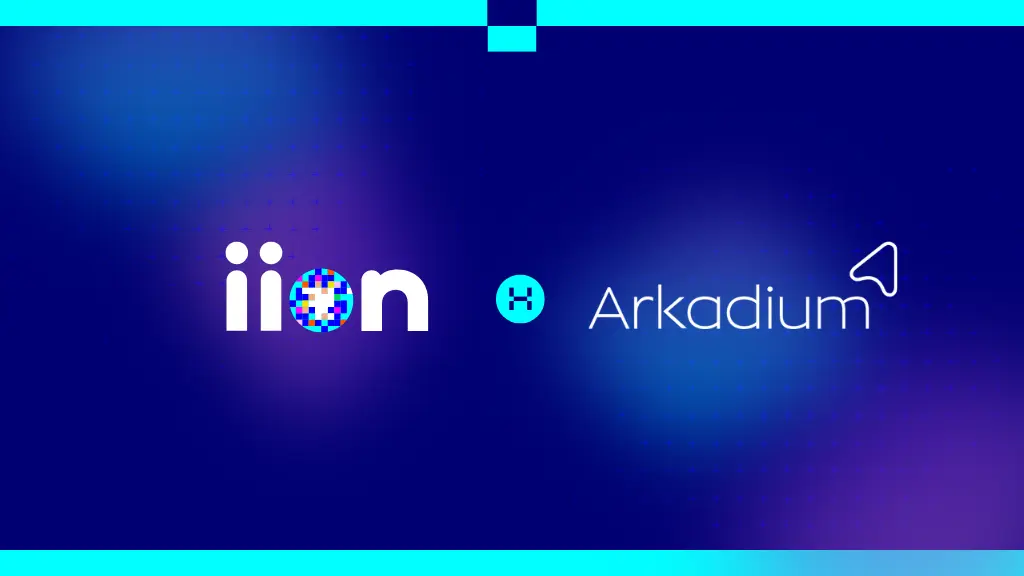AdTech
What are In-Banner Video Ads and How to Get Started With Them?

The growth of video advertising has been exemplary in the past few years. Millions of users consume video content every day, with platforms leveraging the medium to get more views on ads.
Experts predicted that of all the consumer online traffic in 2022, over 80% will be from videos. But as publishers look to increase their revenue through video advertising, which is the right ad type to choose from?
The growth of video content has also driven the growth of types of video ads, and there is no one-size-fits-all.
While there is no clear-cut solution for all publishers, there’s one format that assists a large number of publishers to get started with video ads, without requiring any video content — in-banner video ads.
In this article, we will comprehensively explain what in-banner video ads are, the different types of in-banner video ads, the key differences between in-stream and out-stream ads, the pros and cons of using them, and the best implementation practices.
What Are In-Banner Video Ads?
In-banner video ads combine the visual impact of videos with the conventional placement of banner ads on websites and apps. Instead of using static images, these ads showcase short video content within the banner space. This format provides a more interactive and engaging experience for users, while advertisers benefit from delivering their message in a richer yet compact form.
These in-banner videos are gaining popularity in the gaming world, especially as immersive technologies continue to evolve the industry. When navigating through gaming content, users encounter dynamic video content within a banner ad, rather than a static image. This provides both information and entertainment.
The advantage is that users can learn more about a product or service without leaving their gaming environment. For brands, this method offers an immersive experience that can potentially increase conversion rates.
If you've ever been drawn to a video playing within gaming content, you've seen an in-banner video ad. By blending the familiar format of banner ads with the dynamic nature of video, these ads are revolutionizing game advertising. They create an engaging experience that is valued by both advertisers and gamers.

Types of In-Banner Video Ads in Games
There are primarily three different types of in-banner ads that publishers can add to their ad spaces:
1. Playable Ads: Playable ads are like interactive sneak peeks. They let players engage with a condensed version of the advertised game before they commit to downloading or buying it. It's a hands-on preview, allowing users to experience the gameplay and features firsthand.
2. Rewarded Video Ads: With rewarded video ads, users willingly watch short video content in exchange for in-game rewards. This approach turns ad-watching into a positive experience, offering players something valuable in return for their time, such as extra lives, in-game currency, or power-ups.
3. Dynamic Ads: Dynamic ads are like personalized video content. They adapt based on how a player interacts with the game, tailoring the content to their preferences, behaviors, or in-game progress. This creates a more individualized and engaging advertising experience.
4. In-Game Video Ads: In-game video ads seamlessly blend into the gaming environment. Displayed on billboards or screens within the game world, these ads feel like a natural part of the gaming experience. They enhance immersion and authenticity by mimicking real-world advertising placements within the virtual game space.
What Size Are Banner Video Ads in Games?
In-banner video ads, while pioneering in engagement, are also versatile when it comes to sizing. Here are the prevalent sizes you might encounter in games:
Standard Banner:
- 320x50 pixels
- A standard size that fits well at the top or bottom of a mobile app or game screen.
Medium Rectangle:
- 300x250 pixels
- A versatile size is suitable for various placements within apps and games.
Leaderboard:
- 728x90 pixels
- Typically placed at the top or bottom of a screen for a wider presence.
Full Banner:
- 468x60 pixels
- A smaller banner option that can be placed in different areas of an app or game.
Interstitial:
- 320x480 pixels
- Larger size is often used as a full-screen ad between different sections or levels of an app or game.
Selecting the right ad size is a strategic decision for both advertisers and publishers. It's crucial to ensure the ad's message is not only seen but also effectively absorbed by the target audience. Additionally, the right size ensures the ad doesn't disrupt the gaming experience or cause player turnover. Understanding these dimensions allows advertisers and publishers to create impactful ad placements that deliver performance while maintaining player retention.
Difference Between In-Banner Video Ads and In-Stream & Out-Stream Ads
Other than in-banner video ads, publishers can display video ads through in-stream and out-stream video ads. Here are some details about these ads before we dive into a comparison.
In-Stream Video Ads
If you frequently visit YouTube, then you must have already interacted with in-stream video ads. These ads are short video ads that run during the video a user is viewing.
The ads are played before the video starts, in the video itself, or once the video concludes. For a publisher to run in-stream video ads, the publisher should have pre-existing video content.

Out-Stream Ads
On the other hand, out-stream ads are video advertisements displayed within the content. While they do not require existing video content like in-stream video ads, they do require a video player that can play the ad.

In-banner video ads offer multiple advantages over in-stream and out-stream ads, such as:
- Limited requirements: Unlike the other two ad formats, in-banner video ads do not require a video player to run. The in-banner ads can run GIFs and video clips in the banner without a video player as they are provided by the advertisers.
- Least intrusive: Out-steam and in-stream ads are considered intrusive by a huge chunk of users. In-banner ads, however, provide a favorable user experience as they do not force users to interact with them.
- Use with other ad formats: Since the in-banner ads take up the banner ad inventory, they can be run with out-stream ads to maximize the revenue.

How to Use In-Banner Video Ads on Google Ad Manager
For publishers, Google Ad Manager makes it extremely simple to set up in-banner video ads. Since the in-banner video ads are placed in the banner (display) ad slots, there are not many changes publishers need to make from the usual process.
Here’s how publishers can opt-in with the Google Ad Manager, enabling the server to deliver in-banner video ads:
- Go to the Google Ad Manager home page, and click on ‘Protections’
- Click on ‘New protection’ and then ‘Ad content’. Choose a name for the protection and select the targeting capabilities for the ad inventory
- Scroll down and click on ‘Opt-Ins’
This enables Google Ad Manager to receive requests from demand channels for in-banner video ads.
Before you add Google Ad Manager to your in-banner video ad strategy, here are some key guidelines to remember while implementing in-banner videos on Google Ad Manager:
- Select the ad unit size as you do for banner ads, but choose the video ad size, for example, 300x250.
- Make sure your in-banner video creatives meet the display requirements and guidelines.
- Creatives must include a clickable replay button.
- Total video playtime must be 4 minutes or less.
- Click-to-play creatives must have a 2.2 MB total load size with video.
- Creatives may not expand past ad unit boundaries unless initiated by the user.
- For hover-over initiated ads, 2 seconds of hovering by the user is required before audio is played.
- When the user is no longer hovering, the audio must stop.
Advantages and Disadvantages of Using In-Banner Video Advertising
Much like any technology, in-banner ads have multiple advantages and disadvantages when it comes to publishers. Here are the two sides of the in-banner video ads.
Advantages of In-Banner Video Ads
- Better user experience: As we discussed above, in-banner video ads are less intrusive, and do not pose a threat to user experience. The key thing to note is that these ads do not look like traditional advertisements, and are often perceived by users as a part of the page itself. Moreover, they do not force the user to click on them, making it their choice to interact.
- No length limitation: While other video-based ads have strict duration limits, in-banner video ads present an opportunity for publishers and advertisers to run ads without any length limitations. However, they pose a storage limit, and the ad should be lighter than 500MB.
- Better engagement: Since these ads are not intrusive, they witness better engagement and click-through rates from the users. Moreover, they are also more visually appealing than standard image ads, tempting the user to interact with them.
Disadvantages of In-Banner Video Ads
- Disruptive to some users: Some users have termed in-banner video ads disruptive to their experience as they are not expecting a video ad when they are playing a game.
- Browsers disabling autoplay: One of the reasons in-banner video ads are not used is the autoplay feature. When the user opens an app, many ads autoplay, which some consider intrusive. Many browsers and SSPs have enabled the choice to block autoplay ads, driving down engagement for many publishers.
- Higher loading time: Since the in-banner video ads don’t use a dedicated video player, heavy videos can take a toll on the games’ loading speed. However, this may vary as per the browser and the creative.
Best Practices for In-Banner Video Advertising
While in-banner video ads offer exciting features for publishers and advertisers to get the maximum eyeballs, they also provide publishers with an opportunity to transition from traditional display advertising to video advertising.
If you are looking to incorporate in-banner video ads in your ad strategy, certain practices should be kept in mind before executing them.
Player Engagement: Choose video ad formats that encourage player engagement and retention, such as interactive or rewarded videos, to make the ad experience more enjoyable and valuable for players. Strive for a balance that benefits both revenue and user satisfaction.
Frequency and Timing: Strike a balance in the frequency of in-banner video ads. Avoid overwhelming players with excessive ads, and consider incorporating them at natural breaks in the gameplay to prevent disruption.
Ad Quality: Ensure the quality of the video ads, including resolution, graphics, and relevance to the audience. High-quality ads contribute to a positive user experience and can enhance the effectiveness of the monetization strategy if they resonate with players.
Ad Format Variety: Experiment with different in-banner video ad formats, such as playable ads or rewarded videos, to diversify the user experience and discover which formats resonate best with your player base.
By considering these factors, game developers can implement in-banner video ads effectively, balancing revenue generation with a positive player experience for successful game monetization.
Final Thoughts
There is no single ad type that works for all publishers, and it all boils down to the monetization strategy, gameplay dynamics, and user base. However, with a non-intrusive model and seamless integration, in-banner video advertising is a good place to add video ads to the ad monetization mix.
In-banner video ads enable publishers to push the boundaries of video advertisements without using any existing video content or relying on intrusive out-stream advertisements.
With a huge pool of features, in-banner video ads should be on the game publisher’s list of formats to incorporate into their monetization strategy.
Transitioning from traditional video advertisements to in-banner video ads can seem a tedious and complicated task. iion’s game monetization solution, fusiion, makes it easy for publishers to monetize without compromising user retention.
iion delivers a better experience for your video ads and helps you maximize your revenue, through fusing strong demand sources into a diverse selection of rich media formats that are strategically placed into your games.
Want to learn more about how iion can generate higher CPMs, and streamline your operations with fusiion?
Request a free callback today!























